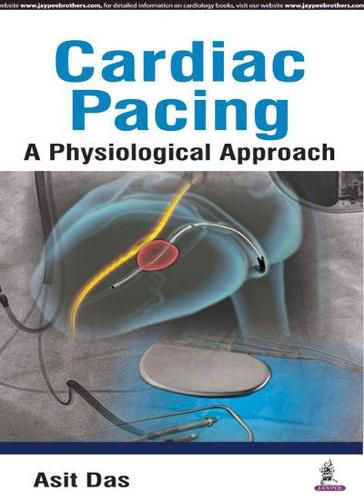Readings Newsletter
Become a Readings Member to make your shopping experience even easier.
Sign in or sign up for free!
You’re not far away from qualifying for FREE standard shipping within Australia
You’ve qualified for FREE standard shipping within Australia
The cart is loading…






Cardiac Pacing: A Physiological Approach is a highly illustrated guide to implanting, monitoring and maintaining a pacemaker.
Divided into fourteen chapters, the book begins with the history of the pacemaker and an introduction to physiological pacing. Subsequent chapters cover managing algorithms for pacemakers, different types of selective site pacing, and a case discussion. The second half of the book includes an introduction to cardiac resynchronisation therapy, the role of pre-procedure ECG analysis in pacing, anatomy of coronary sinus, and implantation technique. The book concludes with chapters on surface electrocardiography and cardiac resynchronisation follow-up, optimising response to treatment, and new advances in the field of cardiac pacing.
Each of the chapters in this book contains a section providing specific information on postgraduate entrance examinations. Enhanced by 679 high quality images and illustrations, the majority in full colour, Cardiac Pacing: A Physiological Approach provides clear information on temporary and permanent pacing devices, post-implantation evaluation, and possible complications and interventions.
Key Points
Highly illustrated guide to cardiac pacing Covers pre-implantation considerations, different types of selective site pacing, implantation technique, post-implantation evaluation, possible complications and interventions Postgraduate entrance examination section in each chapter 679 high quality images and illustrations
$9.00 standard shipping within Australia
FREE standard shipping within Australia for orders over $100.00
Express & International shipping calculated at checkout
Cardiac Pacing: A Physiological Approach is a highly illustrated guide to implanting, monitoring and maintaining a pacemaker.
Divided into fourteen chapters, the book begins with the history of the pacemaker and an introduction to physiological pacing. Subsequent chapters cover managing algorithms for pacemakers, different types of selective site pacing, and a case discussion. The second half of the book includes an introduction to cardiac resynchronisation therapy, the role of pre-procedure ECG analysis in pacing, anatomy of coronary sinus, and implantation technique. The book concludes with chapters on surface electrocardiography and cardiac resynchronisation follow-up, optimising response to treatment, and new advances in the field of cardiac pacing.
Each of the chapters in this book contains a section providing specific information on postgraduate entrance examinations. Enhanced by 679 high quality images and illustrations, the majority in full colour, Cardiac Pacing: A Physiological Approach provides clear information on temporary and permanent pacing devices, post-implantation evaluation, and possible complications and interventions.
Key Points
Highly illustrated guide to cardiac pacing Covers pre-implantation considerations, different types of selective site pacing, implantation technique, post-implantation evaluation, possible complications and interventions Postgraduate entrance examination section in each chapter 679 high quality images and illustrations